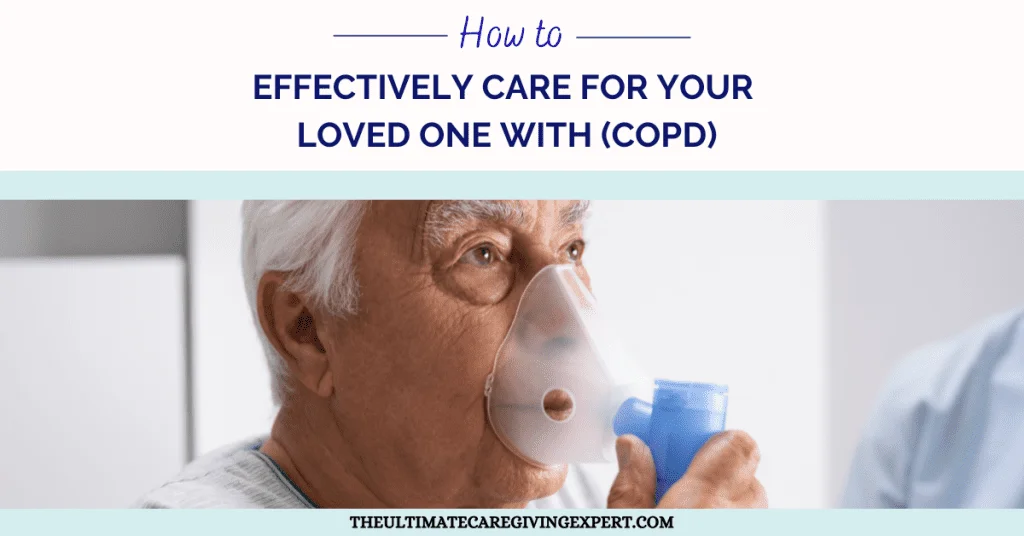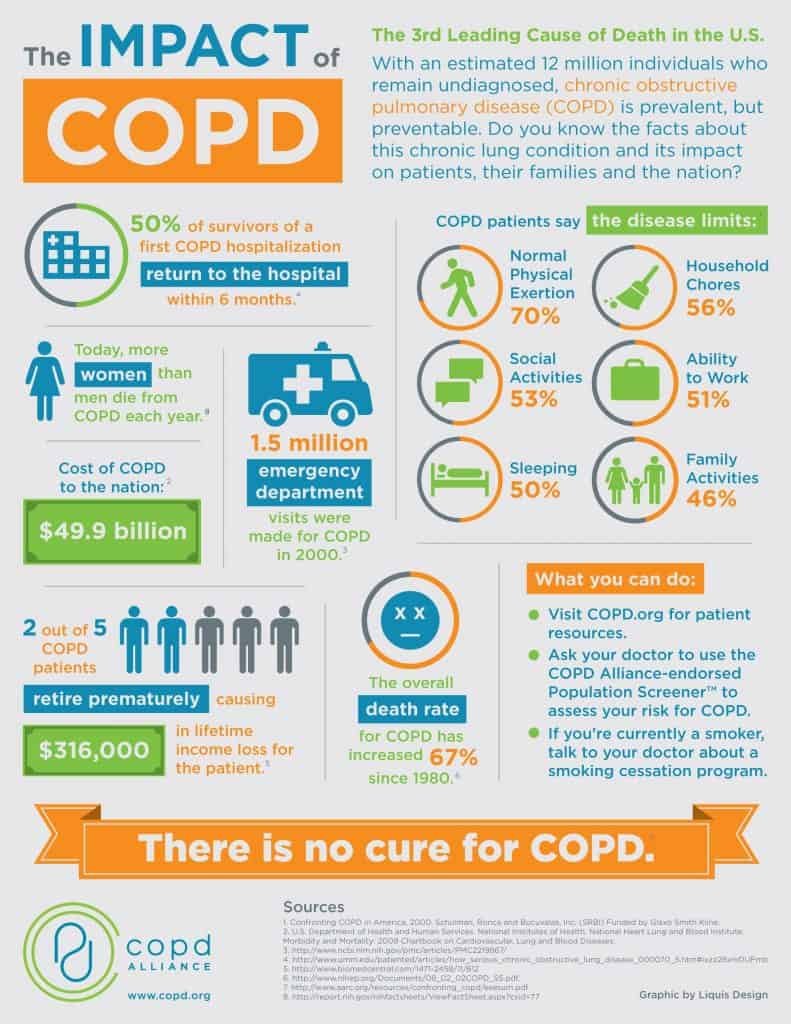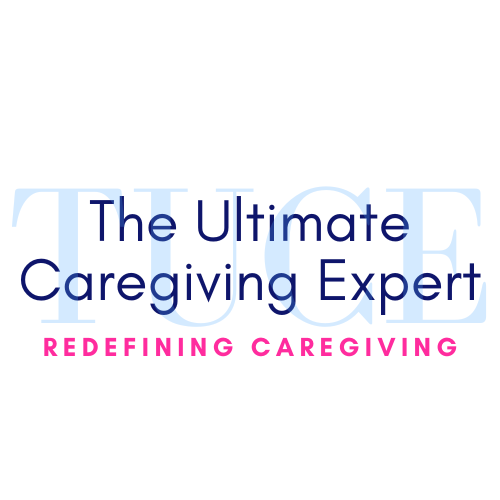How To Effectively Care For Your Loved One With (COPD)

Chronic obstructive pulmonary disease (COPD)** is a common ailment in the elderly and a key concern in COPD care for elderly loved ones. It is a lung disease characterized by chronic obstruction of lung airflow, which interferes with normal breathing and is not fully reversible. The more familiar terms “chronic bronchitis” and “emphysema” are now classified under the COPD diagnosis. In addition to COPD, most elderly individuals (about 94%) also experience other conditions and comorbidities that create new daily caregiving challenges. These conditions may result from COPD itself, coexist alongside it, or share similar risk factors such as smoking.

For guidance on managing multiple chronic conditions, see our resource on creating a caregiving plan of care.
Understanding Chronic Obstructive Pulmonary Disease (COPD)
Our loved one with chronic obstructive pulmonary disease finds it difficult to breathe. And also fall frequent prey to respiratory infections. To understand COPD better, it is necessary that we first learn about its causes. Smoking tobacco is the leading cause of COPD. Our loved ones who smoked or have previously smoked are at a higher risk of contracting the disease. Understanding COPD will give caregivers a better chance to provide appropriate caregiving services to their loved ones.
Causes of Chronic Obstructive Pulmonary Disease (COPD)
- Passive smoker/exposure to secondhand smoke
- Exposure to irritants such as fuel, smoke, or dust
- Family history of COPD
- Asthma
- Air pollution
Symptoms of Chronic Obstructive Pulmonary Disease (COPD)
- Shortness of breath especially experienced after exercise
- Mild cough
- Recurrent cough
- Need to clear throat often
- A wheezing sound that occurs during breathing
- Tightness in the chest
- A cough that refuses to go away even with medications
- Chronic productive/nonproductive cough with clear, white, yellow, or greenish sputum
- The blueness of the lips or fingernail beds
- Frequently prone to infections
- Fatigue
- Unexplained weight loss
- Swelling in the ankles, legs, or feet
For related guidance on breathing challenges, check out how to prevent bedsores with a little TLC — where proper positioning also helps improve respiratory comfort.
The Stages of COPD
Stage 1 COPD
This is where you want to catch the disease to be diagnosed. However, due to the lack of symptoms, it often goes undiagnosed until a later stage. Your goal should be to make healthy lifestyle changes like quitting smoking, avoiding lung irritants, improving your diet, and exercising more.
Stage 2 COPD (Moderate)
In Stage 2, airflow limitation worsens, and people experience shortness of breath during exercise. This is the stage where people usually seek medical attention. Treatment options have become more intense and are more about managing symptoms than preventative maintenance.
Stage 3 COPD (Severe)
At stage 3, COPD, symptoms are far too debilitating to ignore any longer. Along with the common COPD symptoms, you may experience more advanced signs indicating your COPD is more severe. And according to GOLD guidelines. Your treatment options have become more intense, and you must monitor your symptoms closely. Your doctor may try switching treatment methods to see if there’s a more effective way to manage your COPD.
You might experience more advanced symptoms like morning headaches and edema. Supplemental oxygen is more than likely being used at night, possibly 24/7. Your goal at stage 3 should be to slow the progression of your disease through a strict treatment regimen and healthy lifestyle changes.
Stage 4 COPD (Very Severe)
It’s important to remember that everyone is different. You might not experience the same symptoms as the next person. Stage 4 COPD is the most severe. Your symptoms are highly persistent, and they are challenging to manage. But the stigma around stage 4 COPD is the most difficult thing.
Do not let the fact that you have stage 4 COPD define your life. You can live a high-quality life with proper treatment adherence and a robust support system.
Diagnosing Chronic Obstructive Pulmonary Disease (COPD)
Test to confirm Chronic Obstructive Pulmonary Disease (COPD)
-
Lung (pulmonary) function tests.
Pulmonary function tests measure the amount of air you can inhale and exhale. And if your lungs are delivering enough oxygen to your blood.
-
Spirometry test.
You will blow into a large tube connected to a small spirometer machine. This machine measures how much air your lungs can hold and how fast you can blow the air out of your lungs. A Spirometry can detect COPD even before you have symptoms of the disease. It can also track the progression of the disease and watch how well the treatment works.
-
Chest X-ray.
This can show emphysema, one of the leading causes of COPD. An X-ray can also rule out other lung problems or heart failure.
-
CT scan.
A scan can help detect emphysema and help determine if you might benefit from surgery for COPD. CT scans can also screen for lung cancer.
-
Arterial blood gas analysis.
This blood test measures how well your lungs bring oxygen into your blood. Also, it shows how well your lungs remove carbon dioxide.
-
Laboratory tests.
These tests are not used to diagnose COPD. But they are to determine the cause of your symptoms or rule out other conditions. For example, this test may help if you have a family history of COPD and developed COPD at a young age, such as under age 45.
Tips for caregivers to manage their loved one with COPD
1. Educate Yourself
The more you understand about COPD, the better you can care for your loved one. Explore guides like how to care for your loved one with a busy schedule to balance caregiving and personal responsibilities.
2. Promote Lifestyle Changes
Encourage smoking cessation, clean air, and mild exercise like breathing routines or short walks. A healthy diet is essential — consider reading about nutritional care for family caregivers to improve meal planning.
3. Prevent Exposure to Irritants
Keep the home environment clean and free from fumes or dust. Avoid chemical cleaners or smoke that can worsen symptoms.
4. Support Gentle Exercise
Light movement can strengthen lungs and boost morale. Techniques from chronic pain management in caregiving can also help improve flexibility and endurance.
5. Encourage a Nutritious Diet
Avoid processed foods high in salt to prevent water retention. High-fiber meals can help with constipation and digestion, both crucial for those with COPD.
6. Stay Medication-Compliant
Ensure medications and inhalers are used on schedule. Keep rescue inhalers within reach at all times.
7. Prepare for Emergencies
Recognize signs of distress — sudden breathlessness, chest tightness, or confusion. Have a plan ready to contact healthcare providers promptly.
For emotional resilience while caregiving, discover how to remember your self-worth — a must-read for maintaining inner strength.
Conclusion
Caring for a loved one with Chronic Obstructive Pulmonary Disease can be overwhelming — but with the right knowledge, planning, and compassion, it becomes manageable.
By understanding COPD, implementing lifestyle adjustments, and following medical advice, caregivers can significantly improve their loved one’s quality of life.
Remember: your well-being matters, too. Take care of yourself and reach out for help when needed. Explore our caregiving consulting services to create a customized caregiving plan that supports both you and your loved one.


One thought on “How To Effectively Care For Your Loved One With (COPD)”